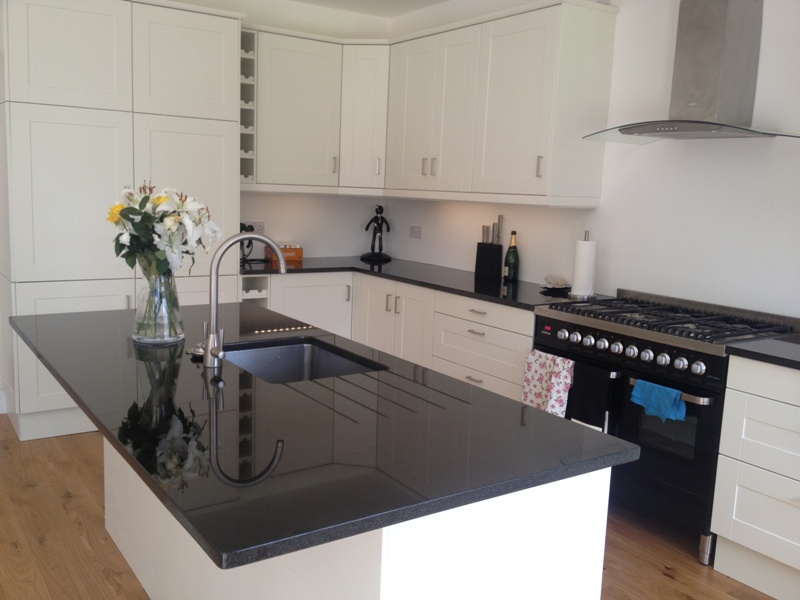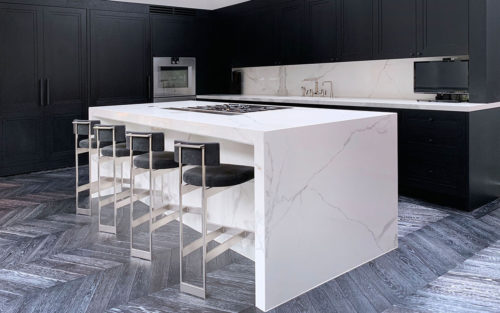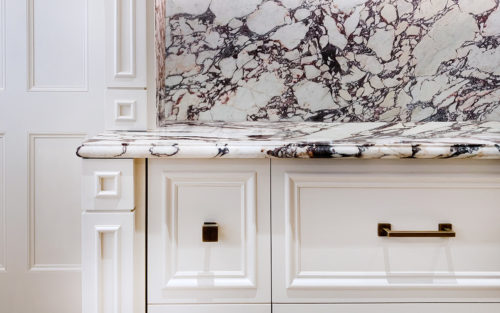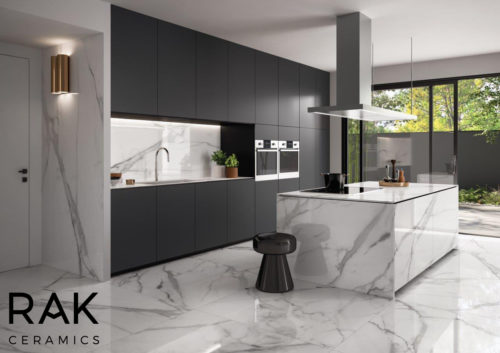Marble is a fabulous stone to use for kitchen worktops. It is not as hard as some other stones and does need a certain amount of care when in use, but most of it is common things to take care.
Marble is what is known as a metamorphic rock and is formed from limestone which in turn is formed on the sea-beds and shores of tropical seas. Limestone is composed largely of seashells of a variety of different creatures that inhabit the sea and are made of the mineral calcite. Over the years, the limestone can get punctured by clay or sand, depending on the conditions of the area, and these are what form the typical swirls and patterns that we see in marble.
The limestone on the sea-bed gets dragged down into the Earth’s crust and the heat fuses the calcite grains tightly together. At this point the rock is warm and flexible and the different pressures are responsible for pushing it around and forming the patterns and swirls from the clay or sand contained in it.
A lot of marble is white, and when this is the case it is formed of pure calcite. However, it can become tinted by iron oxide and will become pink or golden. The carbon that is in fish, seaweed, and algae can revert back to the carbon in graphite when the rock heats, and this produces a steel-grey colour. If serpentine gets into the limestone, it produces a marble which is green or red.
When you choose marble for your worktops it has a stunning feel and appearance that you get from no other stone. However, you do need to take care of it. As it is made originally from seashells it is quite a soft stone, only registering a 3 on the Mohs scale of hardness. This means that it will get scratched by the blade of a knife or if you drag a heavy saucepan across it.
Calcite also reacts chemically with the acids in wine, lemonade, and so on, and if you spill these on the marble it can etch the surface. On a polished stone, the etch will look dull, but this can be polished out. However, some people prefer to leave any etching, considering it as a part of the patina that marble will form over time.
There is a common misconception that marble stains very easily, but this is actually quite rare. The porosity of marble is similar to that of granite. However, porosity can vary from one stone to the next, so it is worth testing a sample. That said, most people prefer to use a sealant on marble in order to reduce the chances of staining.
If you are considering marble worktops in Ruislip or marble tiles for your bathroom – it makes a great statement in a bathroom – why not come over to us at Marble & Granite in Hatfield and explore the wonderful selection of slabs that we have?




